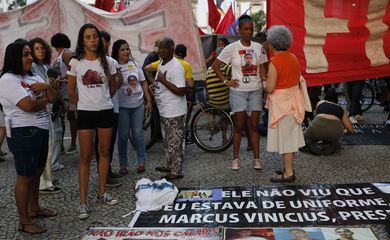Nearly 200 children, adolescents assaulted daily in Brazil

In 2023, Brazil reported an average of 196 daily cases of physical violence against children and adolescents up to the age of 19. Approximately 80 percent of the assaults on children up to age 14 occurred within their own homes. These statistics were released on Thursday (Oct. 24) by the Brazilian Society of Pediatrics (SBP), based on data gathered from health units.

Data from the Ministry of Health's notification system indicate that cases of violence impact all age groups in question.
In 2023, over 3,000 notifications involved infants under the age of 1, while 8,370 cases were reported for children aged 5 to 9. Adolescents aged 15 to 19 were the most affected, with 35,851 notifications of aggression throughout the year.
Underreporting
Despite the high volume of reports, the organization warns that these data represent only "the tip of the iceberg," as underreporting remains a significant challenge that hinders a true understanding of the problem's extent. According to the SBP, many assaults against children and adolescents go unreported, particularly in remote or resource-limited areas.
According to the SBP, the issue of underreporting violence against children and adolescents is particularly pronounced in the North, where the number of notifications is significantly lower. This disparity may be attributed to both limited access to health services and a lack of effective reporting mechanisms.
The institution emphasizes that in Brazil, reporting any suspected or confirmed case of violence against children and adolescents is mandatory, as outlined by the Ministry of Health and the Statute of the Child and Adolescent (ECA). All such cases must be submitted to the local guardianship council.
“In more serious cases, including those involving physical, psychological, or sexual violence, police stations and the Public Prosecutor's Office must also be notified,” according to the Brazilian Society of Pediatrics.
Guidelines
The SBP classifies violence against children and adolescents as a silent disease and emphasizes the importance of health professionals being vigilant and sensitive to potential signs of aggression. These signs may include unexplained fractures, fractures indicative of intentional trauma, or contradictory reports of injuries that do not align with the trauma described or the child’s psychomotor development.
“Intrafamily violence is a chronic and progressive disease that is perpetuated from generation to generation, profoundly affecting the dependency relationship between victim and aggressor. It causes significant harm, both physically and emotionally, by damaging relationships and emotional bonds. This issue transcends social classes and cultures, manifesting signs and symptoms that require treatment, as well as measures to break the cycle through reporting and protective measures,” states the Brazilian Society of Pediatrics.
The organization notes that while diagnosing violence and submitting a notification do not constitute a formal complaint against the aggressors, both are “crucial steps in the process of caring for individuals at risk.”
Campaign
The SBP announced that a new campaign will be launched to raise awareness and provide diagnostic guidance regarding violence against children and adolescents in Brazil.
The proposal aims to enhance prevention actions and improve the early identification of signs of aggression across all levels of health services.





